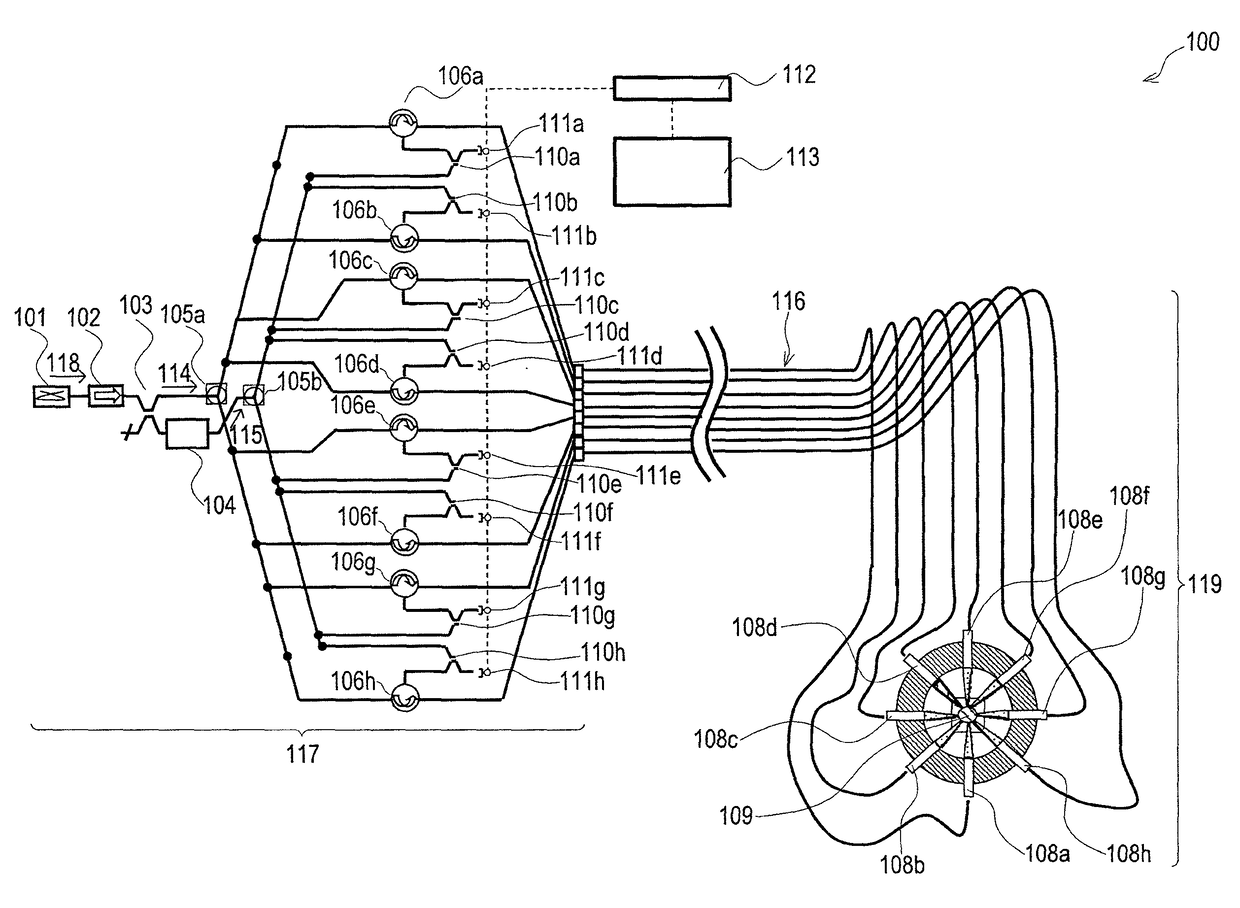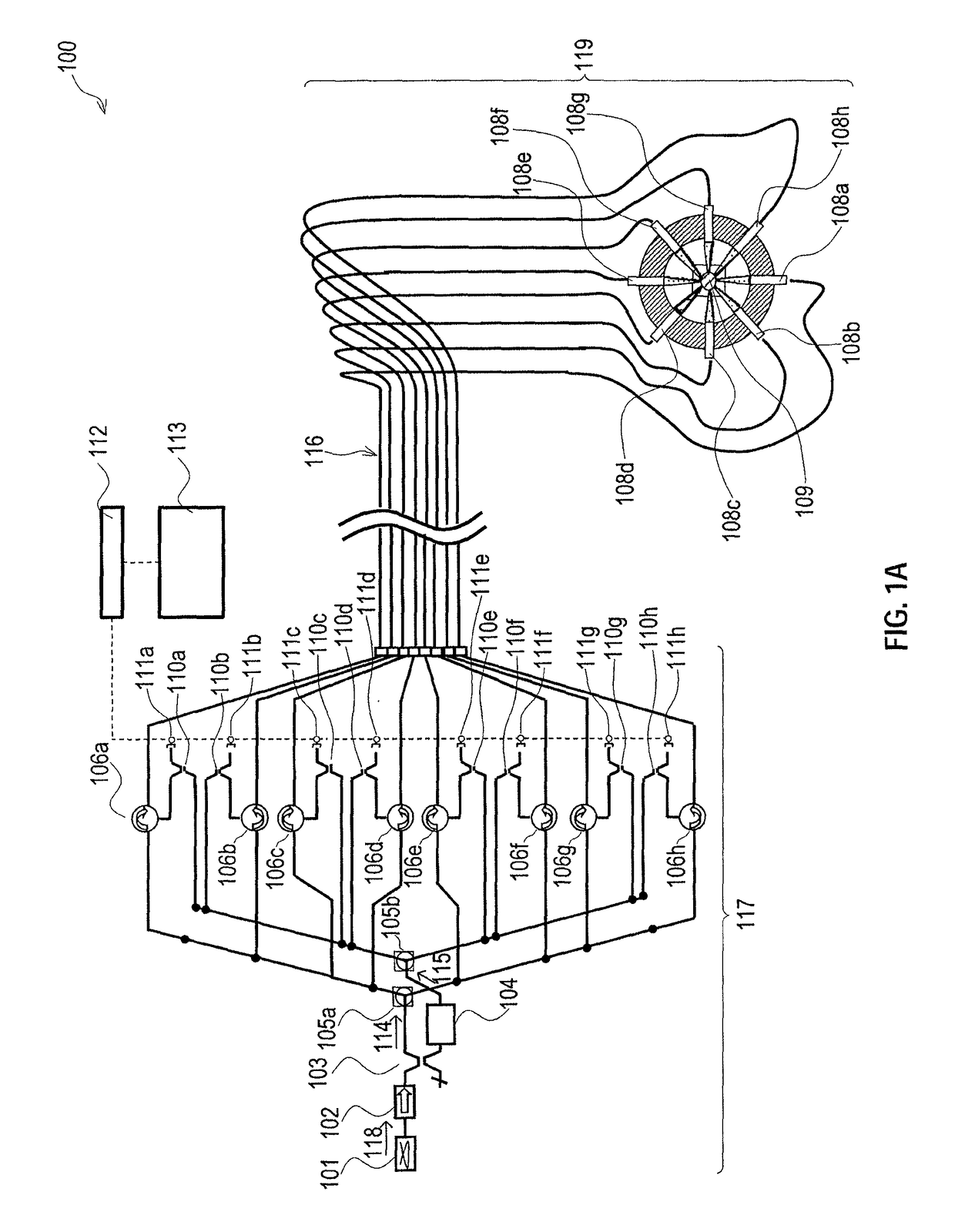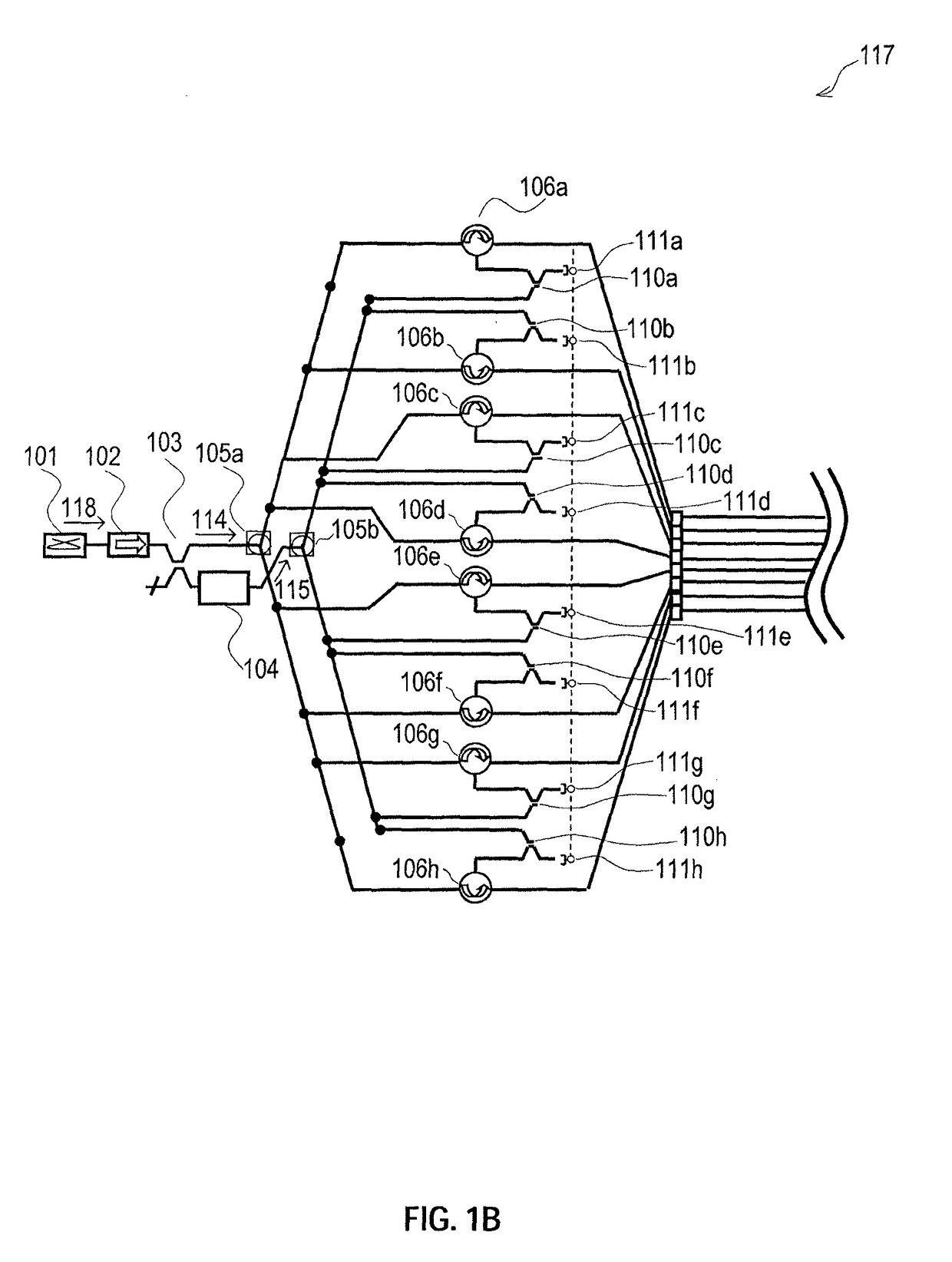Method and system for conformal imaging vibrometry
a technology of conformal fiberoptics and vibrometry, applied in the field of optics, can solve the problems of limitations of traditional modal analysis, limitations of such approaches, and the inference of global structural dynamic behavior further subject to additional restrictive assumptions
- Summary
- Abstract
- Description
- Claims
- Application Information
AI Technical Summary
Benefits of technology
Problems solved by technology
Method used
Image
Examples
Embodiment Construction
[0043]FIG. 1A is a schematic depicting an exemplary embodiment of the present invention's system for conformal imaging vibrometry capable of real-time measurements of the dynamic motions of any arbitrary two-dimensional or three-dimensional structure. The present invention's system represents a substantial departure from conventional bulk-optic vibrometer designs because it supports multi-channel configurations without significant impact on system size or complexity. The present invention's system achieves this outcome by incorporating fiber-optics component technology from the telecommunications field as part of an all-digital, multi-channel implementation of the traditional single-channel heterodyne vibrometer. Specifically, the present invention's system incorporates fiber-optics architecture from the laser source input to the receiver coupling scheme. The present invention's system uses active and passive fiber-optics components throughout to guarantee a robust optical alignment...
PUM
 Login to View More
Login to View More Abstract
Description
Claims
Application Information
 Login to View More
Login to View More - R&D
- Intellectual Property
- Life Sciences
- Materials
- Tech Scout
- Unparalleled Data Quality
- Higher Quality Content
- 60% Fewer Hallucinations
Browse by: Latest US Patents, China's latest patents, Technical Efficacy Thesaurus, Application Domain, Technology Topic, Popular Technical Reports.
© 2025 PatSnap. All rights reserved.Legal|Privacy policy|Modern Slavery Act Transparency Statement|Sitemap|About US| Contact US: help@patsnap.com



